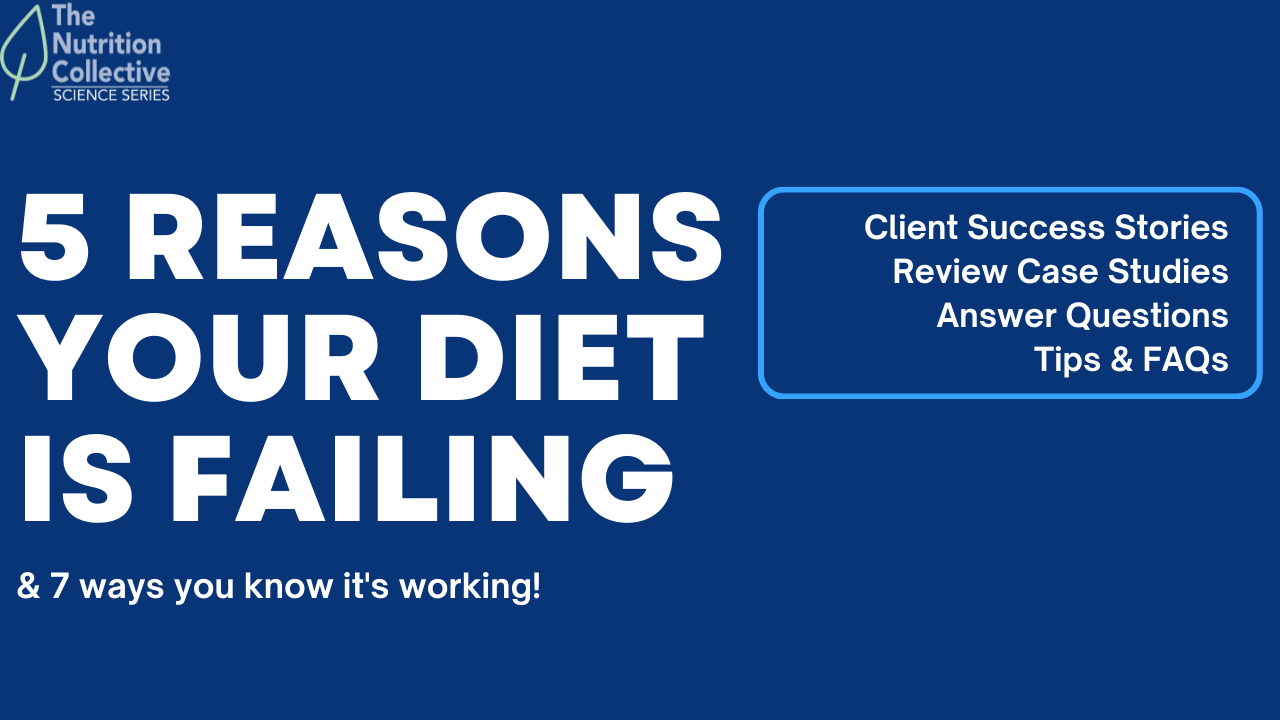Are you struggling to lose that stubborn belly fat?
At first glance, belly fat can be called a “normal fold” that your body makes. That part is true, but excessive belly fat can mean multiple health problems (1) — too much fat is not healthy and definitely not normal.
People with excessive belly fat are linked to a higher risk of diseases, like diabetes and even cancer. Exercising and losing weight is one good way to loosen your belly fat, but it’s not just a plain workout that you need. According to a 2018 published study “Physical activity prescription with a complimentary nutrition education component could benefit the largest group of patients who report metabolic health problems” (2).
It’s never easy, but nobody said it’s impossible. With a little determination and a program that fits your needs and schedule, you can definitely achieve it. Now, how to lose belly fat? Let’s find out!

Expert’s Tips on How to Lose Belly Fat
Losing belly fat is a common weight loss goal. It’s also one of the most difficult fats to get rid off — that is, without a proper weight loss program.
Belly fat is a particularly harmful type of fat. It’s impossible to target belly fat correctly when you diet. However, sustainable weight loss programs can help shrink your waistline and according to the Harvard Medical School can save you from metabolic disturbances like type 2 Diabetes and increased risk for cardiovascular disease (3) .
It’s not always easy, and it takes a lot of effort to get there. But with the right people to train you and a program that fits you correctly, you can definitely achieve losing all of your excessive fat.
Before we talk about how to lose belly fat, it’s essential to know exactly what it is we’re talking about.
What is Belly Fat
So what is belly fat, anyway?
Belly fat, also known as abdominal fat, is fat in our midsection — it consists of subcutaneous fat and visceral fat.
Subcutaneous fat is the fat stored just beneath your skin. Pinch your skin with your thumb and forefinger, and you will be pinching subcutaneous fat. For people focusing on toning their core with crunches and planks, the subcutaneous fat covers up the ab muscles underneath.
This type of fat is typically used by the body to collect excess energy and calories. While some may consider it unsightly, it’s a bit more of an aesthetic issue than its belly-fat opposite, visceral fat.
Visceral fat is stored on your internal organs, inside your muscle wall, deeper within the body. It provides a constant, steady stream of energy to your internal organs, which is why the vital health risks lie — chronic inflammation, diabetes, dementia, and cardiovascular diseases (4).
When someone has excessive visceral fat, it may extend the midsection. However, you don’t always have to be carrying excess pounds for visceral fat to be an issue. For example, someone of “normal” weight with a good body shape may also be at high risk from the adverse health effects of this deep visceral fat.
What Causes Belly Fat
There are a host of potential reasons why people gain belly fat, including a poor diet, lack of exercise and too much stress.
Excessive Calories
When most of us think of calories, we usually think about the fat that we will be consuming from specific. However, in dietary terms, calories are the amount of energy that a food provides. If you consistently take in more energy than needed, you’ll gain excessive weight which is stored as fat, thus belly fat.
Essentially, consuming too many calories is a lot more complex than simply “eating too much.” Your lifestyle,physical activity levels and your food cchoices play the crucial role of defining what is ‘too many’ calories for you. Sometimes, it can become challenging, especially when you’re surrounded by highly processed and low quality food.
This is why the first thing you need to prioritize is to focus on following a whole-food diet. A whole food diet may consist of protein-full food and healthy fats like:
- vegetables,
- fruits,
- plenty of meat,
- fish,
- eggs,
- nuts,
- seeds,
- avocado,
- root vegetables, and
- legumes, especially beans.
Too Much Fructose
You’ve probably heard of high-fructose that’s primarily available in syrups, soda, and a lot more — which your average person consumes most days.
Along with glucose, fructose is one of the two principal components of added sugar. Essentially, it’s a type of sugar that makes up to a half percent of table sugar. However, fructose needs to be converted into glucose through the liver before being absorbed to full use by the body.
So, what makes fructose a concern?
The intake of fructose has risen due to the widespread production of refined sugar and sugar products. Again, fructose is present in sodas, fruit juices, energy drinks, honey, cake, and many more. So avoiding added sugars — no matter what name they’re called by — is vital.
Added sugars are a tricky staple in our food supply. We highly suggest that you scrutinize the list of ingredients present in your everyday food — knowing what you consume is just as essential.
Another important issue when talking about body fat is that fructose and sugar lead to liver fat accumulation (5).
Hormone Imbalance
Hormones are the body’s chemical messengers. They play an integral role in your overall health.
Thus, the body’s ability to store fat in your abdomen can be enhanced or affected by certain hormonal patterns. In men, for example, low testosterone correlates with belly fat (6). In women during menopause, they’re more likely to struggle with noticeable and unwanted changes in their body in storing fat. These are due to the hormonal cascade of rapidly declining estrogen and the relative increase in certain characteristically male hormones. This results in a redistribution of fat in the abdomen, resulting in belly fat gain and associated cardiovascular risk factors.
Best Ways How to Lose Belly Fat
When people think of losing weight, one of the first things that come to mind is getting a toned and tight stomach. After all, who doesn’t want to be able to slip into a pair of jeans perfectly?
Not only that but losing your belly fat is also a surefire way to improve your overall health. So how do you start burning that unwanted belly fat?
Well, I hate to break it to you, but doing hundreds of crunches every day isn’t just the best way to lose belly fat. Exercises that support belly cut just don’t exist, doing exercise alone doesn’t guarantee you to successfully succeed in your goal. You must work towards various fitness-related goals such as cardio, core workout, and most importantly nutrition, because otherwise you will never shrink you waist no matter how many crunches you do.
So, how to lose belly fat? Here’s how!
1. Focus on the Good Food
Essentially, we’ve been calling our food different names — comfort food, food for the soul, fast and convenient food, and the list goes on. But, which food is conclusively “good” food?
Depending on how you see it, the definition of good food will be different for most people. Just like I’ve always said, there’s no one-size-fits-all program — food that is good for you may not be good for others.
However, when losing belly fat, we want to make sure that you’re focusing on food that ‘should’ be given up. Aim to make sure that you’re eating what is best for your metabolism and determine what’s your good food.
To help you start, here are a few tips:
- Drink half your body weight in ounces of water every day. This helps hydrate, detoxify, boosts energy, and helps you naturally limit your intake of soda, sweetened coffee drinks, and other sugary beverages.
- Consume 1 gram of protein per pound of ideal body weight throughout your day’s meals and snacks. Getting enough protein in, naturally, helps stabilize blood sugar and insulin, as well as helps kill cravings for processed foods since it’s so filling.
- Aim for 3-4 cups of non-starchy vegetables per day. This provides an array of vitamins, minerals, and phytonutrients. It also delivers hunger-busting fiber that helps balance your hormones and regulate your appetite.
2. Lift Regularly— and with Good Form

An effective strength training program often involves more than just your body weight. It also takes added resistance from bands, kettlebells, and other equipment to add a continued challenge.
To fully transform your body and reduce excess belly fat, you need to follow a well-designed strength program with progressive overload and do it regularly. The more muscle mass you have, the more calories you burn — this results in better-controlled blood sugar essential for a healthy midsection (belly).
Most fitness professionals and coaches work hard to help clients undo any forward tilting of the hips that can usually posturally protrude the midsection. That’s why I encourage my clients to avoid sitting all day and have them exercise and get moving more — even at work.
One of the best ways to address this is to have you practice exercise programming that prioritizes the posterior chain or backside, which includes our glutes, lower back, and hamstrings, along with stretching hip flexors regularly. Perfect form is a top priority with every lift for efficacy, safety, and strengthening of the core.
You can also pair your metabolism-boosting strength training with regular pilates sessions, one of my favorites. Doing so can help combat postural imbalances from your daily life activities and foster a better mind-body connection.
3. Balance Your Cardio
Does cardio burn fat?
Heart-pumping, sweat-inducing cardio like running, cycling, or swimming — cardio.
Although cardio plays a significant role in a healthy lifestyle, it’s not the most efficient way to shed fat. Yes, the kilometer you run everyday isn’t as effective as you thought it would be. This might be a surprise for most people. But there’s a actually a reason behind that.
Cardio alone isn’t enough, there has to be a balance. You may see cardio and weights as two different types of training, but you have a potent combination for fat loss success when you put them together. You may want to spend a half of your weekly cardio training at intensities that feel easy and doable. Then spend the other half of your time interval training to feel winded and push your max for short bursts. It is important to understand that your metabolism gets faster when you built muscles and cardio is not a good contributor in this part. This is why resistance training is crucial for fat loss.
The logic is, the lower-intensity training sends an active cue to your metabolism that your lifestyle solely relies on regular, slow-paced activities, which then signals it to burn fat.
4. Test Your Hormones

Your hormones almost take up the primary role in a sustainable fitness journey. When kept in balance, hormones have the most significant effect on metabolism. When out of balance, it can prevent you from achieving the fitness results you truly desire.
Addressing your hormonal imbalances can be a surefire game-changer for eliminating belly fat. The first thing you need to understand is that too much exercise can wreak havoc on your hormones — this is why I highly recommend that you follow a tailored-fit training program that best works for you. Besides, if you have any imbalances in your thyroid function, you might be losing fat with a lower rate than expected therefore it is important to ensure that your hormonal levels are in the normal range.
5. Be Patient for the Results
A successful body transformation does not happen overnight — it takes a lot of hard work, consistency, and patience. One of the biggest takeaways that I can give you is to keep moving, do those exercises every day, keep your nutrition in check and never give in to your laziness.
I hate to break it to you, but there’s no 10-day plan or a quick way to eliminate excess visceral fat and flatten those folds. But that doesn’t mean you can’t start doing so. It’s never too late to begin, as I always say.
How Do You Start Losing Belly Fat
So how to lose belly fat?
Noticeable change comes in small increments that’s done consistently over time. Losing weight isn’t always an easy streak, you’ll come across a lot of discouragement, but that doesn’t mean it’s not doable.
At Champ City, I take part in giving you the right array of exercise programs that address your specific issues and concerns. Remember, what works for other people might not work for you. Engaging in sustainable fitness programs open you to a healthier transformation and will also change your overall wellness — the mind, emotions, spirit, and more.

Let’s help you know your path to a healthier you. Click here to sign up for a consultation!
References
1) https://www.who.int/news-room/q-a-detail/obesity-health-consequences-of-being-overweight
2) Elliot, C. A., & Hamlin, M. J. (2018). Combined diet and physical activity is better than diet or physical activity alone at improving health outcomes for patients in New Zealand’s primary care intervention. BMC public health, 18(1), 230. https://doi.org/10.1186/s12889-018-5152-z
3) https://www.health.harvard.edu/staying-healthy/abdominal-fat-and-what-to-do-about-it
4) Després J. P. (2001). Health consequences of visceral obesity. Annals of medicine, 33(8), 534–541. https://doi.org/10.3109/07853890108995963
5) Jensen, T., Abdelmalek, M. F., Sullivan, S., Nadeau, K. J., Green, M., Roncal, C., Nakagawa, T., Kuwabara, M., Sato, Y., Kang, D. H., Tolan, D. R., Sanchez-Lozada, L. G., Rosen, H. R., Lanaspa, M. A., Diehl, A. M., & Johnson, R. J. (2018). Fructose and sugar: A major mediator of non-alcoholic fatty liver disease. Journal of hepatology, 68(5), 1063–1075. https://doi.org/10.1016/j.jhep.2018.01.019
6) Nielsen, T. L., Hagen, C., Wraae, K., Brixen, K., Petersen, P. H., Haug, E., Larsen, R., & Andersen, M. (2007). Visceral and subcutaneous adipose tissue assessed by magnetic resonance imaging in relation to circulating androgens, sex hormone-binding globulin, and luteinizing hormone in young men. The Journal of clinical endocrinology and metabolism, 92(7), 2696–2705. https://doi.org/10.1210/jc.2006-1847







